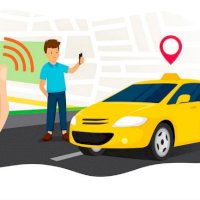Popular and efficient ride-hailing company Uber admits that its smart vehicles are not that aware when it comes to other road users, especially when it comes to cyclists. The autonomous smart taxis from this and many other companies could face many more problems.
Autonomous smart cars may need a lot more work than originally thought, as this is just another protest against the technology. In fact, the models that were launched in San Francisco are still unable to comply with traffic laws when it comes to other road users. These issues have led to questions about how close tech companies really are to producing such futuristic vehicles.
Why is it not in the interest of transportation businesses to popularize self-driving cars?
Problems seem to particularly concern how the vehicles deal with cyclists, who make up a significant portion of traffic especially in San Francisco. Uber's recently launched autonomous vehicles do not comply with traffic laws when crossing bike lanes. In fact, statistics list that such vehicles have made unsafe turns in bike lanes, putting cyclists at risk of collision.
Let's not forget that these are vehicles with a new technology, a more sophisticated one. These have been created and developed by man and it is not an exact or perfect science. In other words, these autonomous smart cars are error-free and can be a great danger for those who own one as well as for those who are near it.
Experts say that human intervention will be zero in the event of a problem or inconvenience with this vehicle. Due to traffic accidents and the fact that it is a very modern technology, the prices that these could reach would be very high. Added to this is the fact that this service represents a large amount of unemployment for many drivers of private companies like Uber.
Smart taxi cyclist problems
Uber's smart taxis have recently been accused of not noticing cyclists and it is the biggest complaint about this transportation option. Current road laws in North America, especially in California, state that vehicles entering a right-hand bike lane before turning right must yield to any cyclists already there.
In fact, several other incidents have been shared on social media now, which show that autonomous smart cars commit many other traffic violations. One of these failures is that they run red lights, putting pedestrians and other road vehicles at risk, in addition to many other violations. However, even if these problems are present, many companies will continue with their tests until they find a solution.
The artificial intelligence of these vehicles is still immature. Even when it collects hundreds of thousands of pieces of data at high speed, it still doesn't know how to transform them. It always follows real action rules. This is something that worries the Intelligent Vehicle Systems Unit of countries like Spain. Automatic driving is still not considered natural driving.
Are these vehicles independent of human control?
The answer to this is no, as these vehicles use a system that needs to be constantly in use to improve. This explains why artificial intelligence algorithms learn based on experience. The more in-depth the tests companies carry out in cities, the more trained they will be. Driverless cars will face greater challenges such as pedestrians and intersections. These are extremely difficult for these vehicles to manage.
Although the mechanical part of autonomous cars is much more reliable and offers a faster reaction, this is still a technology that the transport market is still wary of. If all the unpredictable actions that the automated system has were eliminated, the number of accidents would probably decrease and it would be much simpler.
All autonomous vehicles, as they are much more predictable, can coordinate with each other. If these types of systems are developed better in the future, they will cause fewer accidents, which is beneficial for business.
What has been the social impact of autonomous smart cars?
There are different levels of autonomy available and it is not surprising that a world with Level 5 autonomous vehicles will affect humanity and society in many ways. In fact, throughout the article we have mentioned different ways in which it has done so. However, this is a change for the appearance and design of cars.
Vehicles must be optimized to accommodate humans who will no longer drive them and will spend their time inside the vehicle doing other tasks such as work or leisure. The new generations require a car that makes their travel easier. Work is underway on vehicles that will not need certain parts, such as gear shifts, steering wheels and pedals.
In fact, the absence of these will provide more space inside the car. On the other hand, driving licenses will no longer be necessary. In addition, children and the elderly will have the opportunity to travel on their own and even the work day can start as soon as you get into the vehicle. Autonomous smart cars, like all technologies, are very innovative and seek to transform.






